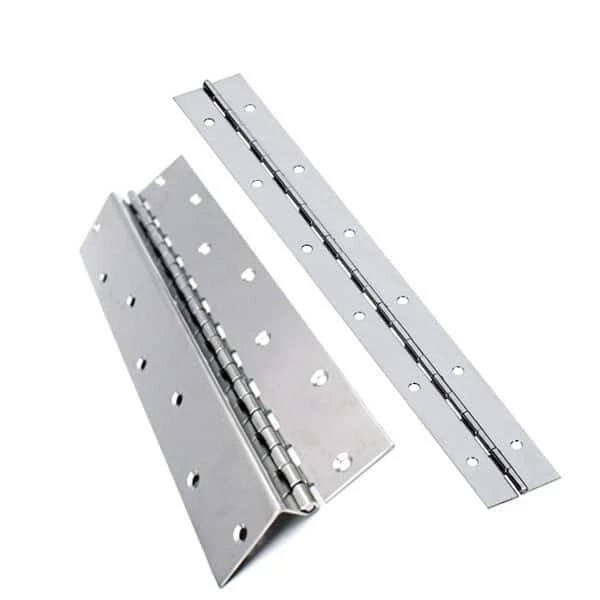Stainless steel with a high level of corrosion resistance is known as austenitic stainless steel, specifically type 316. In applications that demand a high level of corrosion resistance, such as maritime or outdoor conditions, 316 Stainless Steel Piano Hinges, which are hinges constructed from this specific grade of stainless steel, are frequently utilized. Their resistance to caustic chemicals and acids makes them popular in the food and chemical sectors as well. Modern home construction frequently includes piano hinges. Despite having heard the name, many people are still unsure of what a piano hinge is, what advantages it provides, and how it may be used in a variety of situations. Homeowners wanting to build a new home or renovate an existing one should pay close attention to these details.
Advantages of Piano Hinges
On a door frame, conventional butt hinges are placed at regular intervals to fix and regulate their movement. Piano hinges are unique in that they span the entire length of a door or lid, allowing for a more fluid operation. In terms of design and installation, continuous piano hinges have the following advantages:
Equal weight distribution: One of the major benefits of standard or commercial piano hinges for doors is that they evenly disperse the door\'s weight throughout its whole length. When installing heavier lids or doors during construction, doing it this way is more efficient and smooth.
Simple maintenance: Small piano hinges are also available if the homeowner\'s personal preferences or installation-specific circumstances call for their use. Especially when utilized in smaller sizes, they require less upkeep.
Durability: Because the weight is distributed uniformly when 316 Stainless Steel Piano Hinges are used, doors are stronger and more durable. This has a number of benefits, mostly for commercial purposes.
Security: The characteristic of greater endurance also draws attention to another advantage of piano hinges, namely, increased security. When safety is an issue during installation in a house or workplace, continuous piano hinges like these Stainless Steel ones offer remarkable strength.
How to Install Piano Hinges?
Piano hinge installation is a task that should be left to the experts. But if you\'ve done it before, you can fix them right. To start with, you\'ll need the necessary tools like a drill machine, a screwdriver, and screws. Taking precise measurements of the area where the hinge needs to be put is the most crucial stage.
You\'ll also need to have an accurate measurement reading because there are various sorts of hinges available on the market. You can use a measuring tape to take these measurements if you intend to install little piano hinges. From the selections at Hinge Outlet, you can choose piano hinges. Once you have the appropriate hinge, all that is left to do is measure the screw holes, drill them, and then screw the hinges into both the door and the frame.



